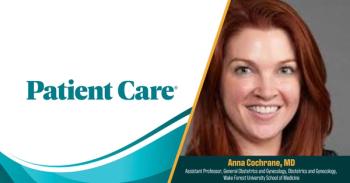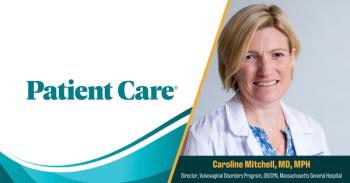
Prevent Chronic Pain with Transformative Care
This PAINWeek 2016 presentation focused on how to more deeply involve patients in their own pain management plan.
A lead-off presentation on the first day of the PAINWeek 2016 conference in Las Vegas, Nevada called for a “transformative care” model to prevent acute pain from becoming chronic, and to reduce persistent pain while restoring the patient’s functioning and quality of life.
“It’s not about cracking the whip and getting people to change, it’s really about helping set goals, giving them the social support they need to make the changes they need to make” to help improve pain levels James Fricton, DDS, MS, told the attendees. Dr. Fricton is Professor of Dentistry, Medicine and Public Health, University of Minnesota, Minneapolis and Senior Research Investigator at Health Partners, Bloomington, Minnesota
In an article he co-authored in the current PAINWeek Journal, distributed to attendees, he related the principle of transformative care to the Institute of Medicine’s (IOM) 2011 monograph, Relieving Pain in America: A Blueprint for Transforming Prevention, Care, Education and Research, which “emphasized the need to transform our current passive model of doctor-centered care into one that is patient-centered.”
“If health professionals want to improve patient outcomes they need to consider helping people identify and change the multidimensional risk factors that may contribute to delayed recovery and chronic pain,” Fricton and colleagues wrote.
Fricton noted that, in addition to the growing evidence of beneficial outcomes with holistic approaches to pain management, there is also an imperative posed by the new CDC guidelines on opioid prescribing indicating, “Nonpharmacologic therapy and nonopioid pharmacolologic therapy are preferred for chronic pain.”
The Protective Principle
Fricton attributes the central tenant of his approach to prevent and reduce chronic pain to Ben Franklin’s maxim that an ounce of prevention is worth a pound of cure. His therapeutic interventions are aimed at reducing the risk factors that cause, prolong, or worsen pain, and increase the protective factors against chronic pain.
He presented the risk and protective factors within seven realms of the human systems, under the acronym BLESS ME: Body, Lifestyle, Emotions, Society, Spirit, Mind, Environment.
Examples of risk and protective factors in each realm:
This human systems approach offers a more comprehensive understanding of how myriad lifestyle risk factor and protective factors work to perpetuate chronic pain via feedback loops that can increase both peripheral and central sensitization.
“So, the protective principle,” Fricton said, “is you want to have fewer risk factors and you want to have more protective factors-those things that contribute to health and well-being and minimize the pain.”
Although there has been extensive epidemiologic study of risk factors and their contribution to illness and pain, Fricton observed, there has been relatively little study of the effectiveness of increasing protective factors.
“If we look at the things that are positive influences on the patient’s life, health, and well-being and pain, in actuality when you look at both (risk and protective factors) from our clinical and research perspective, the protective factors are much more important than the risk factors,” Fricton said.
Fricton told attendees that he has described the goal to patients as “managing the volume control” around emotions that amplify life’s ups and downs, in order to reduce risk factors and increase protective factors. He emphasized that his screening is not principally focused on risk assessment but on emphasizing development and recognition of the protective factors.
“What are they doing right, and how do you reinforce those positive things?” he posed.
After assessing risks and protective factors, an action plan, or “experiential homework” is then fashioned for the patient, Fricton explained. “We try to identify and change each of those risk factors, and really enhance protective factors-exercise, posture, stretching, self-efficacy, understanding, real-life expectations. All the protective factors, we hit every one in different (on-line) lessons, each about 5 to 10 minutes long, mainly presented by animated characters.”
Fricton and colleagues described the value of their approach in the current PAINWeek article: “If a sufficient, even small, number of risk factors are present, it can shift the balance from the healing of acute pain to a delayed recovery and chronic pain. Strengthening protective factors and successful reduction of multiple risk factors in the cycle may have significant impact in healing the injured tissues.”
Reference: Fricton J, Clavel A, Weisberg MB.
Resources
For practitioners interested in additional information, Dr Fricton is the instructor for a University of Michigan massive open on-line course (MOOC) titled “Prevention of Chronic Pain: A Human Systems Approach” that can be accessed at:
He also recommends the Web site
Newsletter
Enhance your clinical practice with the Patient Care newsletter, offering the latest evidence-based guidelines, diagnostic insights, and treatment strategies for primary care physicians.


